Expert’s Rating
Pros
- Unique and stylish design
- Bloat-free operating system
- Solid performance
- Fun accessories
- Excellent value
Cons
- No NFC
- Only IP52 rated
- Simple camera setup
Our Verdict
The CMF Phone 1 is the most stylish and interesting design to hit the budget market in years. It’s not perfect, but if you want something different, and don’t want to spend the big bucks, it’s certainly the way to go.
When I first got word that Nothing was going to release a budget phone under its CMF sub-brand, I was a little confused. After all, we just saw the Nothing Phone (2a), which only costs £349, how cheap can a phone get before it loses that signature Nothing charm?
Now, the CMF Phone 1 has landed, and it’s every bit as cool and unique as its pricier siblings – an impressive feat given the £209/$199 MSRP. This phone has a modular design with a removable back and a selection of fun accessories that can be screwed into place.
It’s a design unlike anything else on the market and is the injection of interest that the cookie-cutter budget smartphone market needed.
It’s not just style that this phone brings to the table, either. The CMF Phone 1 has a bright and speedy OLED display, a large battery, a solid mid-range chip and a 50Mp main shooter – many of the same specs as the pricier Phone (2a). I was excited to find out what it’s like to live with.
If you’re looking for a stylish budget phone with great software and smooth performance, the CMF Phone 1 is hard to beat.
Design & Build
- Interchangeable plastic back
- Tool-free Accessory Point
- 197g, IP52 rated
The CMF Phone 1 has a boxy, iPhone-like design with a completely flat display, squared-off edges and a flat rear panel. The volume rocker and lock button are on opposite sides of the device (also like an iPhone), and as an Android user, that took some getting used to.
I’m testing the black version, which has a plastic rear casing with a uniform matte finish. I love the feel of this material, it reminds me of the PBT keycaps that you’d find on a high-end mechanical keyboard. It’s completely immune to fingerprint smudges, too, which is not often the case with matte black designs.
The phone is also available in orange and light green options (dark blue is exclusive to India), and both are much more eye-catching than the subtle black variant. If you choose the signature orange colourway, you’ll get a vegan leather rear panel, while the light green model has the same matte plastic finish.
With this phone, though, it doesn’t really matter which colour you choose, because the back can be swapped in a matter of minutes. You don’t get the glyph lights of the Nothing phones, of course.

Luke Baker
For a price of £29/£35, you can get a brand-new rear casing in either orange, blue or light green. Then, with the help of a flathead screwdriver (included), and a few minutes of your time, you can completely change the look of your phone. It’s a unique feature these days, reminiscent of the classic phones of old like the Nokia 3210.
with the help of a flathead screwdriver, and a few minutes of your time, you can completely change the look of your phone
The exposed screws that enable this feature give the phone a sort of industrial, rugged vibe, and it’s unlike anything else on the market. I’m used to budget phones playing it safe in the design department, brands typically want to appeal to as many customers as possible, and their phones end up looking anonymous and boring. CMF, however, dives in the exact opposite direction.
On the lower right of the rear panel, there’s a large knurled knob that protrudes from the rear panel by a millimetre or so. When the design of this phone was first teased, I expected it to act as volume control or something along those lines, but it’s not quite that sophisticated.

Luke Baker
This knob is actually what CMF calls an Accessory Point, and that’s a fancy way of describing a screw with a tool-free design. This knob can be removed and replaced with either a lanyard, a kickstand or a card wallet – all of which are optional purchases that retail for £19/$25 each.
In terms of actual utility, I don’t feel like the Accessory Point adds much. You could always buy a regular phone case with a kickstand, card holder or lanyard, after all. But it’s fun and unique, and that’s exactly what the budget market has been missing.
A small note is that the accessories currently only come in orange. That may change going forward and of course, CMF may release additional accessories, plus we could also see third-party ones too.
The rear cameras are surrounded by a flat aluminium panel with a matte finish and slightly glossier sides. This protrudes by the same amount as the Accessory Point, and means that the phone doesn’t rock about too much when it’s placed screen-up on a table. It’s another thoughtful touch.

Luke Baker
The CMF Phone 1 has an IP52 rating for dust and water resistance. It’s better than nothing, but that removable rear panel clearly isn’t doing the phone any favours when it comes to water resistance. There’s no mention of the type of glass that’s used on the front, and the rear panel seems like it’d scratch quite easily. On the plus side, you can just swap it out if it starts looking tatty.
The haptic motors are pretty weak, and they’re not going to impress if you’ve used any recent flagship phones. Given this phone’s price point, though, I think they’re acceptable enough.
Screen & Speakers
- 120Hz 6.67-inch OLED display
- 2000 nits, 1080 x 2400 resolution
- Mono speaker
The CMF Phone 1 has a large 6.67-inch FHD+ OLED display with a speedy 120Hz refresh rate. This refresh rate is adaptive, too, and it’ll switch down to 60Hz to conserve battery life depending on what you’re viewing.
The highlights are dazzlingly bright and the dark areas are deep and detailed
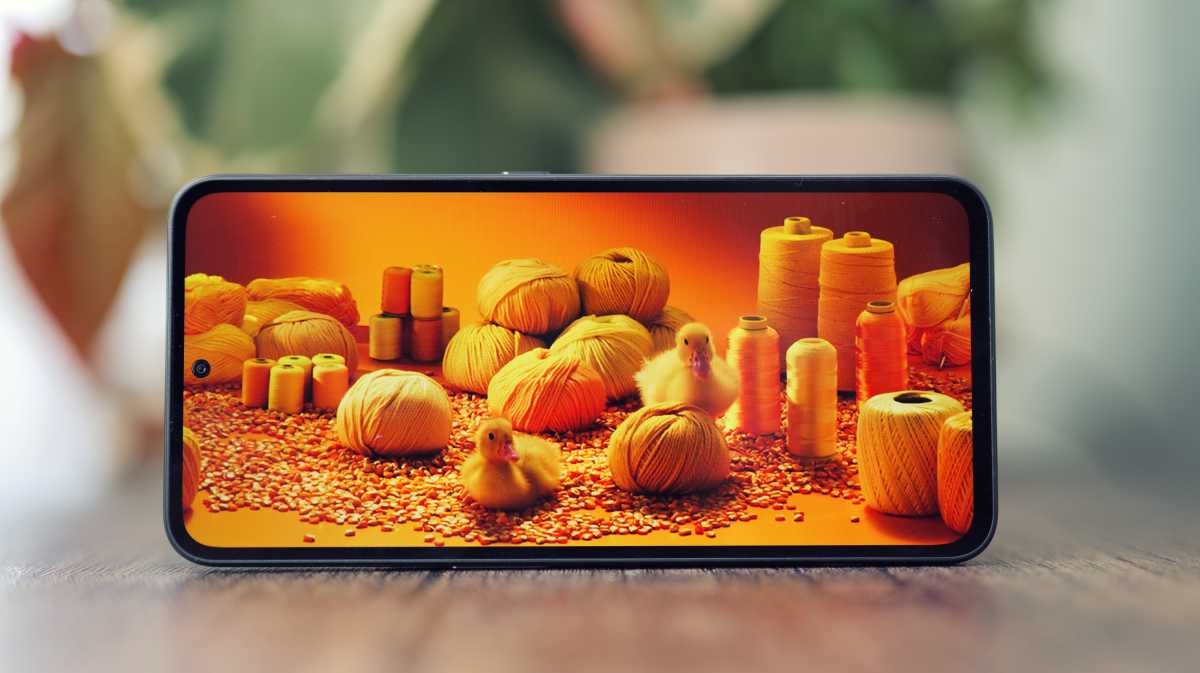
Luke Baker
It’s also a very bright panel, and it can boost up to 2000 nits at peak brightness. I had no trouble seeing it, even when the British summer sunshine occasionally poked its head through the clouds. Whatever glass has been used here is definitely a bit more smudge-prone than a typical flagship, but it’s par for the course in this price range.
It’s a fully flat screen with fairly chunky bezels on each side. The chin is slightly larger than the other sides of the bezel, but it’s minimal, and you really have to be looking to notice it. Normally, I feel like chunky bezels make a phone look cheap, but oddly enough, it kind of fits with the utilitarian design of the CMF Phone 1, and it didn’t bother me as much as usual.
One thing I didn’t like as much is that there’s a very slight raised lip at the edge of the display. It’s tiny, and you can barely see it with the naked eye, but you feel it every time you swipe from the edge of the display, and you do that a lot with gesture controls. Switching to the CMF Phone 1 from a curved-edge display was especially jarring.
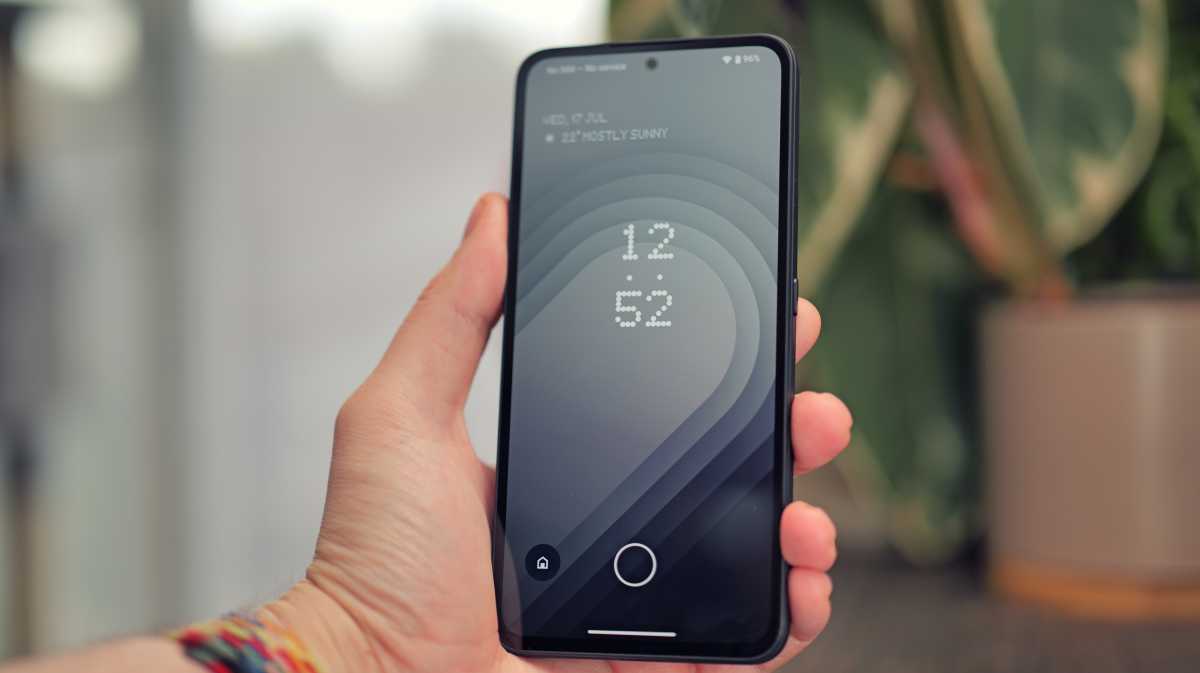
Luke Baker
This display doesn’t have any of the popular HDR certifications, but it can display HDR content, and it works well with YouTube HDR, at the very least. It looks great doing so, too. The highlights are dazzlingly bright and the dark areas are deep and detailed.
There’s an optical under-display fingerprint reader towards the bottom of the panel, and I found that it works just as reliably as optical readers from competing brands. It’s slightly lower than I’d like, but it’s not so far down that it becomes uncomfortable to reach.
There’s only a single speaker on the CMF Phone 1, which means it can’t create any kind of stereo effect. It produces a good level of detail and vocals come through clean and clear, but it’s a little tinny sounding, and could definitely use a boost in the lower frequencies.
On the plus side, it can get very loud, and it’s well-positioned, so you’ll very rarely muffle it with your palm.
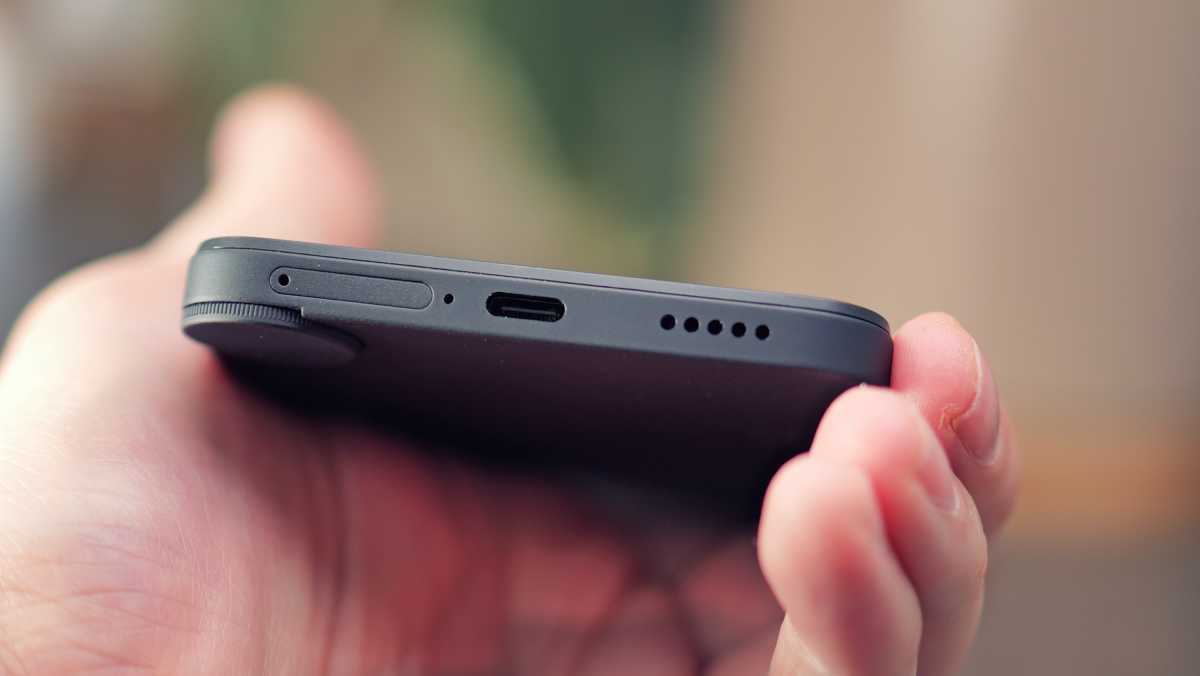
Luke Baker
Specs & Performance
- MediaTek Dimensity 7300
- 8GB RAM
- 128GB / 256GB storage
The CMF Phone 1 is powered by the MediaTek Dimensity 7300 SoC, and it’s paired with 8GB of RAM and either 128- or 256GB of storage. There’s also a version with 6GB of RAM, but that’s only available in India.
This is effectively the same chip that we tested in the Oppo Reno 12 Pro recently, and given that this phone retails for less than half the price, it’s impressive to see it being used here.
Normal day-to-day tasks are smooth and lag-free, but there are few giveaways that this is a lower-end chip. For example, using the search in the settings menu leaves me waiting longer than I’m used to. Still, it’s easy to live with and certainly doesn’t feel underpowered.

Luke Baker
When it comes to gaming, it gets the job done, but you’ll need to stick to lower settings to get the best experience. With my usual test title, Genshin Impact, it ran very smoothly on the lowest preset at 30fps, and it could just about handle 60fps mode on the same preset. Going any higher introduced lots of stutter and slowdowns.
It’s a decent showing at this price point, and the fact that the phone remained cool under pressure is another plus point. Even after half an hour of Genshin, the phone was barely warm to the touch.

Luke Baker
There’s a game overlay built into Nothing OS, but it’s the most basic that I have come across so far.
It allows you to toggle on Performance Mode, block calls and notifications, lock your brightness or start a screen recording. It’s a very limited selection, but they’re all useful, and it’s nice that you can access everything with a quick swipe.
CMF Phone 1 benchmarks
Cameras
- 50Mp main sensor
- 16Mp selfie camera
- Up to 4K 30fps video recording
The CMF Phone 1 might look like it has two rear cameras, but it actually only has one usable lens. The other lens is a 2Mp depth sensor, designed to improve the accuracy of portrait mode cutouts.
You might have noticed that most modern flagships lack a depth sensor, and that’s because you don’t really need one. My suspicion is that it’s mainly here to increase the camera count and the look, and indeed, the phone appears more modern than it would with a single lens on the back.
this main camera can produce some very nice-looking photos, especially in the daylight
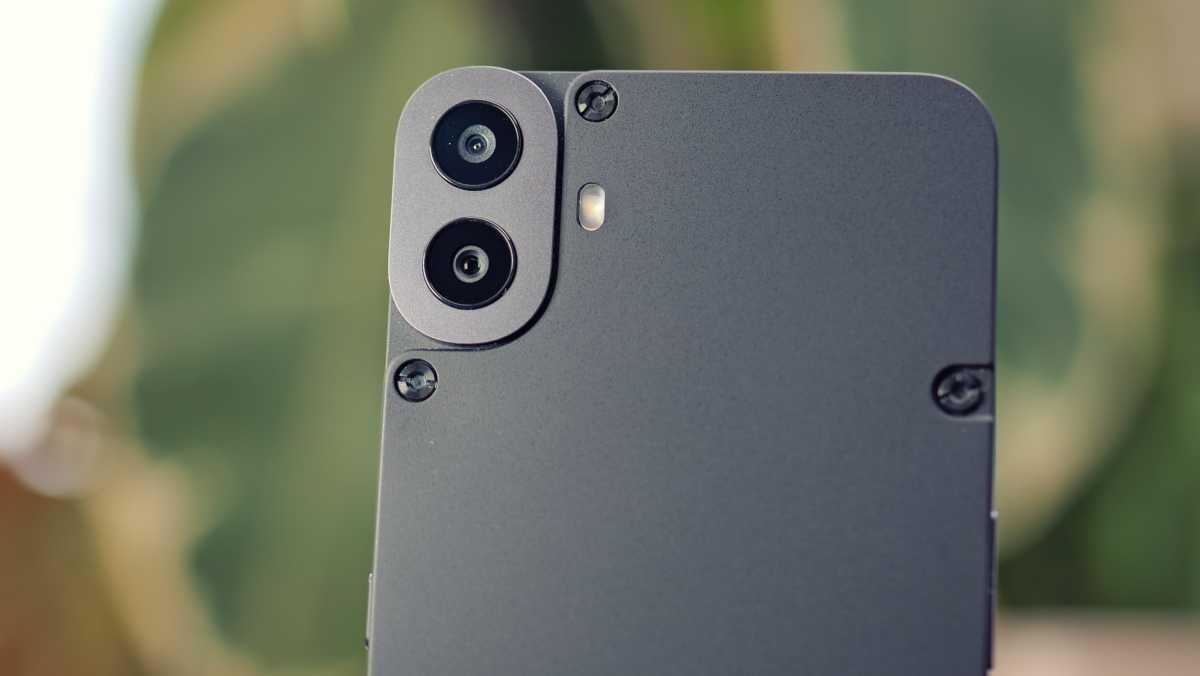
Luke Baker
The single rear camera has a 50Mp resolution and a relatively small 1/1.95-inch sensor. The lens is a 26mm equivalent with an f/1.8 aperture and it lacks OIS (optical image stabilisation), relying entirely on electronic image stabilisation instead.
On paper, these specs aren’t too impressive, but this main camera can produce some very nice-looking photos, especially in the daylight. The exposure is well-balanced, the sharpening and contrast aren’t overbearing, and the HDR effects are quite good. The minimum focus distance is impressively small, too.
The phone allows you to select between Vivid and Natural colour profiles similar to the Xiaomi 14 series, so you can decide if you’d prefer a vibrant poppy image, or something more realistic.
There’s also a 2x toggle that crops in to the main sensor for closer framing. Unfortunately, doing so results in a noticeable drop in sharpness and definition, so you’ll get better results if you physically move closer.
The CMF Phone 1 is capable of taking some decent nighttime shots, but that lack of OIS means it’s very prone to motion blur. Some images come out looking a little grainy due to the relatively small sensor, too. Aided by night mode, though, you can get some usable snaps in the dark.
The selfie camera has a 16Mp resolution, an f/2.0 aperture and a 24mm equivalent focal length. You can also punch in slightly to a 29mm equivalent field of view if you prefer tighter framing.
It takes decent snaps, but don’t expect it to wow you too much. Of course, daylight shots look the best but it’s not too bad when the light gets low. The image gets a little noisy in such conditions, but motion blur isn’t too prevalent.
Despite having a dedicated depth sensor, the subject detection isn’t the most reliable in portrait mode. It’s not awful, but I noticed errors in quite a few of my shots, it was especially bad with shots of animals. On the plus side, the bokeh effects look quite authentic, and you can get some great results when the detection hits just right.
Battery Life & Charging
- 5000mAh battery
- 33W wired charging
- No charger included
The CMF Phone 1 has a sizable 5000mAh battery pack, just like you’ll find in most 2024 phones. With this phone, it’s paired with a lower-end energy-efficient chip, and that means it’ll last longer than most.
No matter what I was doing, the phone never failed to see me through the day. More often than not I’d go to bed with 40% or more battery left in the tank. If you’re a light user, two days on a charge is definitely possible, but a day and a half is a more realistic prospect for most people.
If you’re a light user, two days on a charge is definitely possible
As with all other Nothing phones, there’s no charger included in the box, but the phone supports up to 33W wired charging with a compatible wall adapter. If you like your gear to match, then CMF’s 65W GaN charger might be a nice pairing.

Luke Baker
Using my Ugreen Nexode multi-charger, the CMF Phone 1 was able to charge up to 30% in 15 minutes. It’s nothing too impressive, but it’s not too sluggish, either. You can expect a full charge from flat to take around an hour.
You might think with a removable rear cover that the battery is also easily removable. It’s not but it should at least be a lot easier to replace than most phones.
There’s no wireless charging support, but that’s not surprising on a budget handset like this. You can, at least, use the phone to charge other devices with a wire, and it’ll output 5W from its USB-C port if you choose to do so.
Software & Apps
- Nothing OS 2.6, based on Android 14
- Heavily stylised interface
- No bloatware
The CMF Phone 1 runs the same software as the other phones in Nothing’s lineup, Nothing OS 2.6, and it’s my first time using it for an extended period.
it’s the closest thing to a Google Pixel that I’ve found when it comes to a clean install
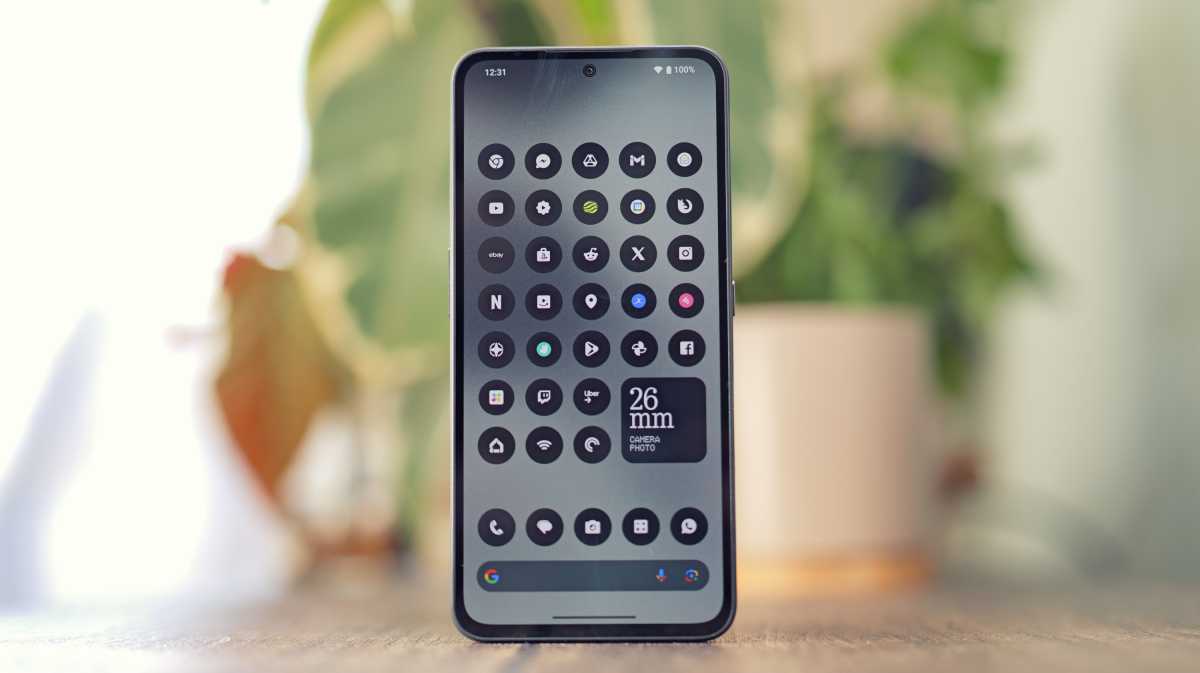
Luke Baker
The first thing that struck me was the styling. Nothing has a very strong brand identity with a minimalist, edgy, low-fi flair, and you’ll find that woven throughout the operating system.
By default, Nothing’s icon pack is applied, and your apps will display as monochrome circular bubbles. It’s very different to any other skin, and personally, I think it looks brilliant.
The styling extends to Nothing’s widgets, too, all of which display in the brand’s signature dot matrix styling. You can have panels displaying the weather, world clock, camera shortcuts, step count and more.
I was also pleased to see that there’s essentially no bloatware whatsoever. The only extras you’ll find are a couple of Nothing apps, it’s the closest thing to a Google Pixel that I’ve found when it comes to a clean install.
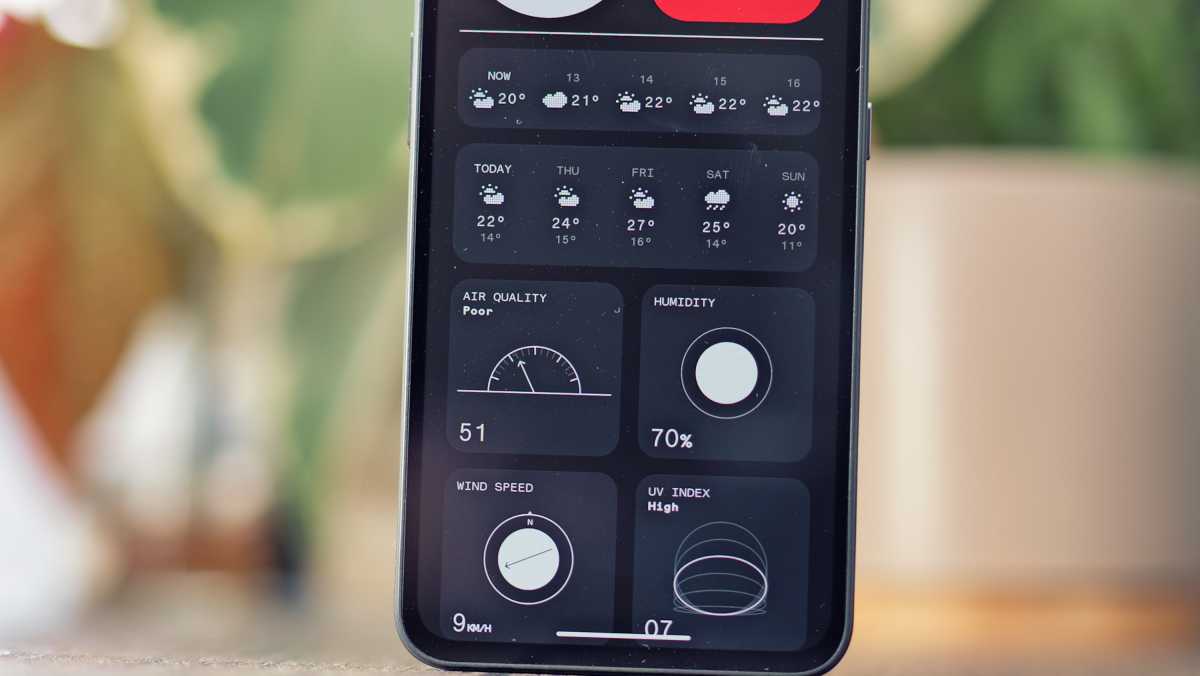
Luke Baker
Aside from the styling and a few widgets, Nothing OS doesn’t stray too far from the stock Android experience, and for the most part, I think that’s a good thing. However, compared to other brands, there are a few creature comforts missing.
The one that frustrated me the most was the lack of an option move or organise apps in bulk. Importing my data from another phone dumped all my apps on the home screen, and when that happens, I usually like to bulk remove everything and start fresh.
With Nothing OS, there’s no such option. I’d need to long-press each app individually to move it. With as many apps as I have installed, that’d be a mammoth undertaking. So after organising the first page, I just left the cluttered mess on the other pages, it’s far from ideal.
Price & Availability
The CMF Phone 1 is available to purchase now in the UK from Nothing’s website and Amazon. The 128GB model is currently available for an introductory price of just £179, the normal MSRP is £209. If you need more storage, the 256GB model retails for £239.
In the US, the Phone 1 is $199 with just the 128GB model available.
At the time of writing, we haven’t seen any contract deals, so you’ll need to purchase the phone outright if you want to get your hands on one. If you do, be sure to check out our guide to the best SIM-only deals.
The phone is also available to purchase in most European markets. These regions also get an introductory price of €199.99 and will eventually increase to €239.
Should you buy the CMF Phone 1?
The CMF Phone 1 is the most impressive and unique budget phone that I have tried in years. It’s no easy feat to make something exciting and appealing at such a low price point, but Nothing has done so with finesse.
This phone looks and feels like it should be twice the price, and despite a few niggles, it’s easily the best software experience in its class. The performance is great, so long as you’re not expecting a top-tier gaming machine and the funky design, lovely display and unique modular accessories sweeten the deal, too.
Of course, there are compromises at this price point. There’s no NFC, which means no Google Pay, and that could be a dealbreaker for some. The cameras are fine, but it’s not hard to find comparable quality and more lenses, at a similar price.
It’s important to consider the competition, too. The Redmi Note 13 5G can be found at a similar price and packs a 108Mp main camera and an ultrawide lens, there’s also the Poco X6, which is a far better choice for gaming on a budget. Neither are as cool as the CMF offering, though, and Xiaomi’s software isn’t for everyone.
If you’re looking for a stylish budget phone with great software and smooth performance, the CMF Phone 1 is hard to beat. It’s a truly exciting design, and in the budget market, that’s not something you find very often.
Specs
- Nothing OS 2.6, based on Android 14
- 6.67-inch, 2400×1080, OLED, 120Hz
- In-display fingerprint sensor
- MediaTek Dimensity 7300
- 8GB RAM
- 128GB / 256GB storage
- Cameras:
- 50Mp main sensor
- 16Mp selfie camera
- Up to 4K @ 30fps rear video
- Mono speaker
- Dual-SIM
- MicroSD card slot
- Wi-Fi 802.11 a/b/g/n/ac/ax
- Bluetooth 5.3
- 5000mAh battery
- 33W charging
- 164 x 77 x 8 mm
- IP52 certified
- 197g
- Colours: Black, Light Green, Orange






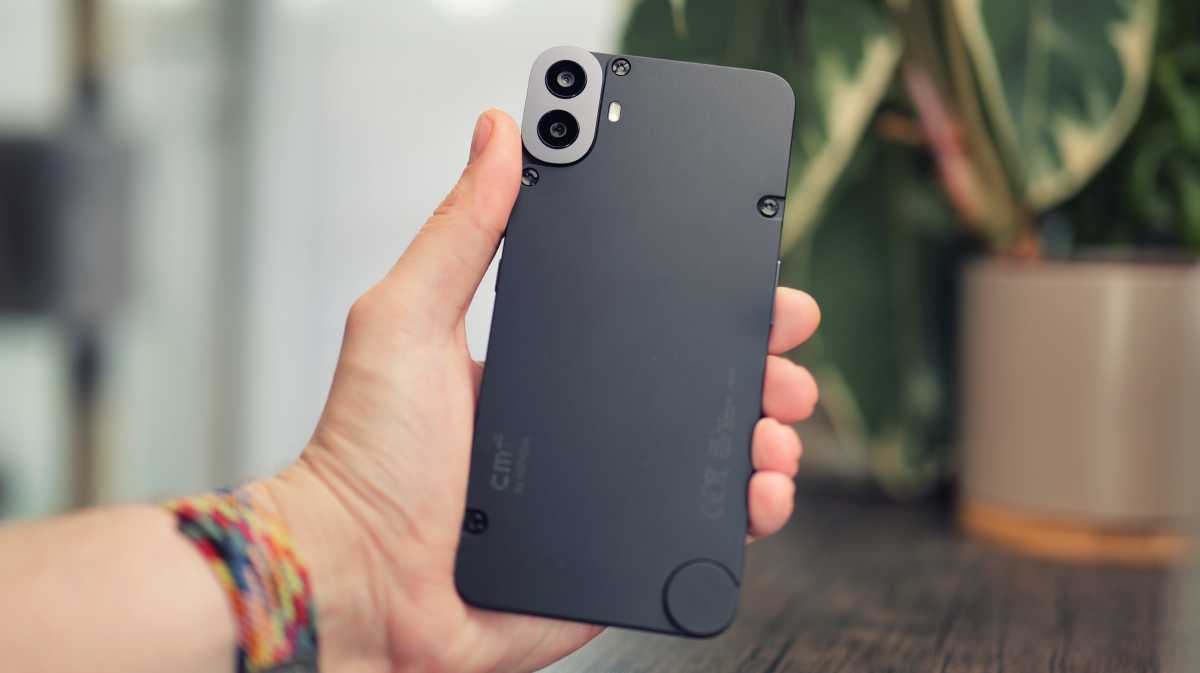

/origin-imgresizer.eurosport.com/2024/07/24/4008862-81314888-2560-1440.jpg?w=150&resize=150,150&ssl=1)






